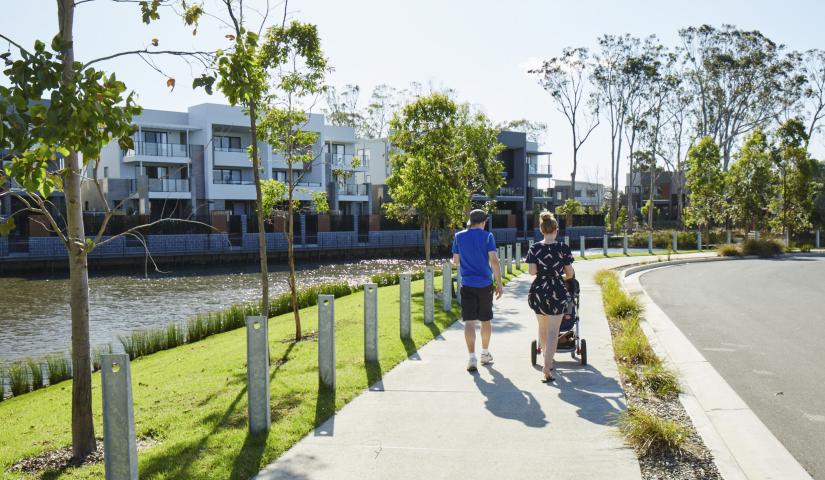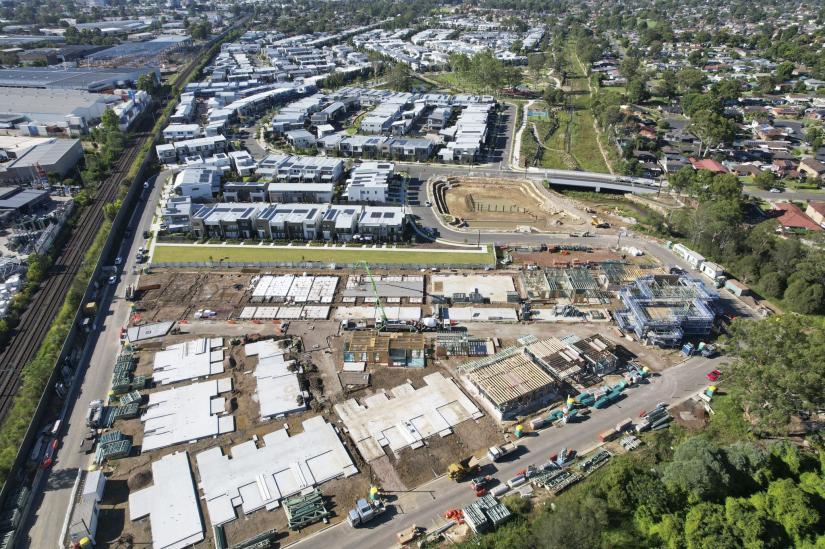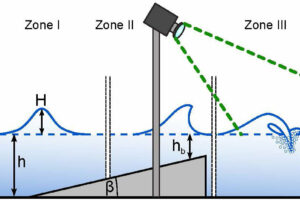New research led by UTS demonstrates environmental benefits of geothermal technology and sustainable design.
New research led by UTS demonstrates environmental benefits of geothermal technology and sustainable design.
A study led by Professor Leena Thomas from the University of Technology Sydney (UTS) has found homes at a world-leading sustainable community in western Sydney use 21 percent less electricity than comparable nearby suburbs because of geothermal technology.
Ground source heat pumps use the stable ambient temperature below ground to heat and cool homes. In summer the units take heat from inside the home and transfer it via a series of underground pipes to the ground for cooling before returning it to the home. In winter they take natural heat from the ground and reverse the process.
The study examined the effects of ground source heat pumps on the 750 homes at the Fairwater community by Frasers Property Australia. It found that when installed at scale and at the beginning of the building process, geothermal technology can be both a profitable and environmentally beneficial addition to a home.
Clear benefits
Professor Thomas said the research offers a number of insights in relation to environmental performance as well as occupant behaviour and experience.
“The research demonstrated clear energy benefits from geothermal technology and high ratings for comfort in the Fairwater homes.
“An overwhelming majority of residents at Fairwater also reported that living in the precinct has had a positive effect on their health and wellbeing,” said Professor Thomas.
The $1.64 million project known as the Fairwater Living Laboratory was funded by the Australian Renewable Energy Agency (ARENA), Frasers Property Australia and the NSW Office of Energy and Climate Change.

The project, which spanned three years from September 2019 to August 2021, and encompassed the Sydney COVID lockdowns, also found that the demand reduction aspects of the geothermal technology had the potential to ‘smooth out’ electricity grid usage, which could help avoid spikes that can lead to blackouts and power cuts in extreme weather.
Fairwater homes recorded an average of 3kW of avoided power demand per household during critical peak events.
Our findings highlight that an integrated precinct-based approach for incorporating sustainability and energy efficient technologies when combined with an understanding of occupant practices offers the best pathway for decarbonisation and getting beyond net zero.
Professor Leena Thomas
Getting to net zero needs an integrated approach
While the study focused on the benefits of the ground source heat pumps, it also looked at the other environmentally sustainable aspects of Fairwater, including its light-coloured roofs.
It found that the roofs already produced a cooling effect of three to four degrees. As trees at Fairwater mature it is expected the ambient temperatures in the community will reduce even further.
“Our findings highlight that an integrated precinct-based approach for incorporating sustainability and energy efficient technologies when combined with an understanding of occupant practices offers the best pathway for decarbonisation and getting beyond net zero,” said Professor Thomas.
Cameron Jackson, General Manager Development NSW, Frasers Property Australia says the company has an ambitious target of being net zero in development and operation by 2028, and that means investigating new technology and spending the time to analyse and evaluate it.
“This has been such an interesting project to support, and watch unfold,” he says.
“We were confident the installation of geothermal heating and cooling technology in our Fairwater homes would help our customers reduce their energy consumption and their bills, and now we have confirmation of that.
“We will use the findings of this ground-breaking study to guide us on our pathway to net zero.”
The study found installing geothermal technology at scale at Fairwater added additional upfront cost to the construction, however combined with other environmentally friendly features of Fairwater homes, it contributed a cost saving the users and value to the properties at completion.

Research to inform decision-making and policy
The Fairwater Living Laboratory project drew on multidisciplinary expertise from UTS’ faculties of Design Architecture and Building, Science, Health and its Institute of Sustainable Futures, and was undertaken in association with Climate-KIC Australia and Curtin University.
Belinda Whelan, Director of Strategic Projects, Climate-KIC Australia says the study will provide governments and the property industry with solid information on which to base their geothermal decision-making.
“The built environment sector in Australia has a really important role to play in helping Australia meet its net-zero ambitions. Studies like Fairwater provide policy makers and the property sector with deep insight and data to guide informed decision-making to make rapid change at scale,” she says.
The findings of the study will now inform government policy and encourage broader industry adoption of the energy efficient infrastructure and development of sustainable homes and precincts.
Source: Enviromental News Network











Add Comment